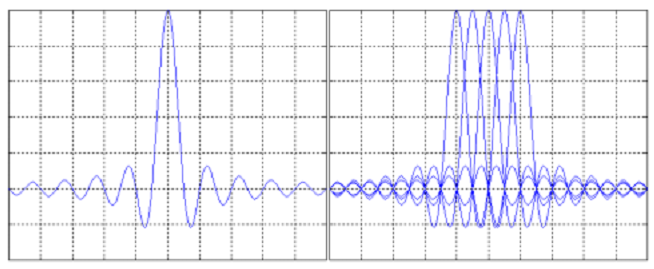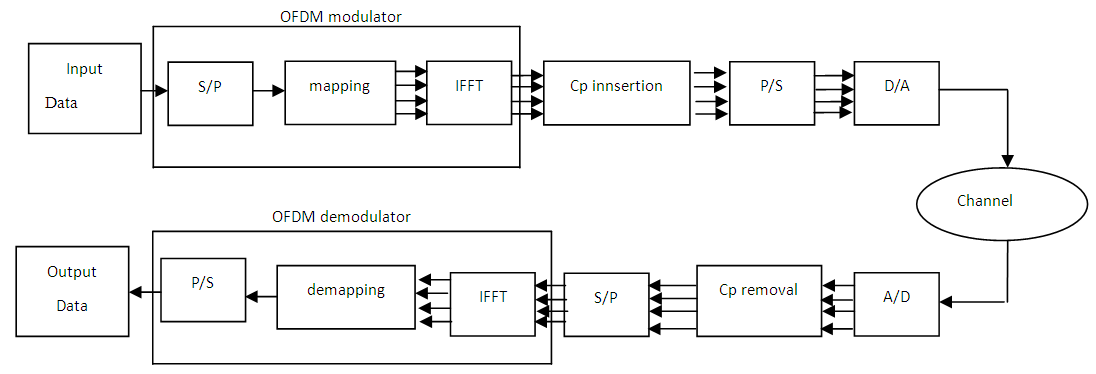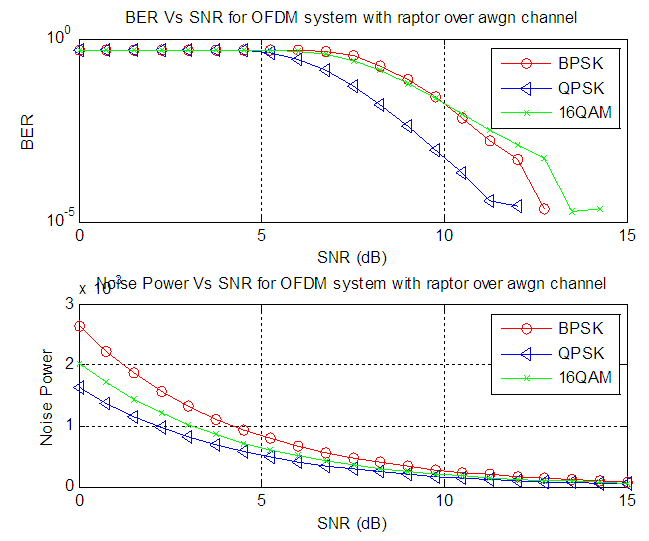-
Paper Information
- Paper Submission
-
Journal Information
- About This Journal
- Editorial Board
- Current Issue
- Archive
- Author Guidelines
- Contact Us
International Journal of Networks and Communications
p-ISSN: 2168-4936 e-ISSN: 2168-4944
2016; 6(6): 103-110
doi:10.5923/j.ijnc.20160606.01

Performance Enhancement of Raptor Codes Employment in OFDM-System
N. M. El-Gohary1, Mohsen A. M. Kassem2, F. E. Abed El-Samie3, M. M. Fouada1
1Department of Electonics and Communication, Faculty of Engineering, Zagazig University, Egypt
2Department of Communication Technology, Faculty of Industrial Education, Helwan University, Egypt
3Department of Electonics and Communication, Faculty of Electonics Engineering, Menofia University, Egypt
Correspondence to: Mohsen A. M. Kassem, Department of Communication Technology, Faculty of Industrial Education, Helwan University, Egypt.
| Email: |  |
Copyright © 2016 Scientific & Academic Publishing. All Rights Reserved.
This work is licensed under the Creative Commons Attribution International License (CC BY).
http://creativecommons.org/licenses/by/4.0/

In the course of recent years, there has been expanding confirmation on broadening the services available on wired public telecommunications networks to mobile/wireless telecommunications users. At present, only low-bit-rate data services in addition to voice services are available to mobile users. However, the demand for Wireless Broadband Multimedia Communication Systems (WBMCS) is expected to increase within both the public and special sectors. The wired networks are cannot support extensions to wireless mobile networks, where it misses the configuration flexibility and the infrastructure needs. In fact, the mobile radio channels are more polluted than wired data-transmission channels, hence the high Quality of services (QoS) tools are required in wired networks cannot be obtained in wireless networks. The object of the third and the fourth generation of mobile networks are to extend users with high data rates, and to spread a wider range of services, such as voice communications, videophones, and high-speed Internet access. A common challenge in designing a wireless system is to control and decrease the effects of the wireless channel, having multiple transmission paths and being time varying. Orthogonal Frequency Division Multiplexing (OFDM) is a wideband modulation scheme that is designed to overcome the problems of multi-path channels. In this paper, we examine the wireless OFDM system utilizing Raptor codes. Raptor code is the new developing rate less code which has indicated wonderful performance over a mixture of channels. There is an insistence on the interleaving depth of OFDM-based system because of delay and maximum packet size. This non-perfect interleaving influences the most extreme achievable assorted qualities from the channel. We explored the impact of connection between's cloudiness pieces, which identifies with the constrained interleaving imaginable between carrier in an OFDM system using Raptor code. The computer simulation experiments are carried out to evaluate the proposed technique and measure the degree of the Raptor code acceptance. There are also, many metrics are utilized based on the diverse modulation techniques and based on Raptor codes, also, for BER computation.
Keywords: Raptor codes, Orthogonal Frequency Division Multiplexing (OFDM), Quality of services (QoS), Bit error rate (BER)
Cite this paper: N. M. El-Gohary, Mohsen A. M. Kassem, F. E. Abed El-Samie, M. M. Fouada, Performance Enhancement of Raptor Codes Employment in OFDM-System, International Journal of Networks and Communications, Vol. 6 No. 6, 2016, pp. 103-110. doi: 10.5923/j.ijnc.20160606.01.
Article Outline
1. Introduction
- In advanced wireless communication system, the Forward Error Correcting (FEC) codes are utilized for productive transmission of information in hard situations, it plays an essential role in controlling the bad effect of the wireless channels. Accomplishing a less bit error rate (BER) has been the significant undertaking in the field of error control coding; Source codes [1-3] are an idea of forward error correcting codes. The main acknowledgment of Fountain codes was Luby Transform (LT) codes [4]. Raptor codes, which are a class of Fountain codes and the expansion of LT codes with direct time encoding and decoding, tend to give preferred execution over the low density parity check (LDPC) codes on burst error channels [2, 7]. Raptor code [8] has the properties of direct time, straight time decoding, and near perfect code execution under any channel misfortune conditions. The execution of the wireless OFDM communication system is examination utilizing Raptor codes. The time-shifting elements of wireless correspondence channels negatively influence the system execution. Raptor code is the new rising rate less code which has indicated astounding execution over a variety of channels. There is an imperative on the interleaving profundity of OFDM-based system because of deferral and most extreme packet size. This non-perfect interleaving influences the most extreme achievable differing qualities from the channel. Whatever remains of the paper is composed as takes after: In Section II, essential of Orthogonal Frequency Division Multiplexing (OFDM) system outline necessities is presented. In section III, Fountain Codes, Luby Transform code and Raptor Codes are clarified. Section IV, the proposed system model of the OFDM system is presented. In Section V, simulation results will be discussed with the assistance of the graphical representation characteristic plan over AWGN and Rayleigh Fading Channels. Section VI Discuss the throughput and analysis with Raptor consideration. Section VII, conclusions will be advanced.
2. OFDM
- OFDM is of great concern by researchers and research laboratories all over the world. It has already been accepted for the new wireless local area network standards IEEE 802.11a, High Performance LAN type 2 (HIPERLAN/2) and Mobile Multimedia Access communication (MMAC) Systems. Also, it is expected to be used for wireless broadband Multimedia communications. OFDM Basically splits a high-rate data stream into a set of low-rate sub-streams that are transmitted simultaneously over a number of sub-carriers. Thereby, the bandwidth of the sub-carriers become small compared with the coherence channel bandwidth as in Fig 1.
 | Figure 1. Concept of the OFDM signal: (a) conventional multicarrier technique, and (b) Orthogonal multicarrier modulation technique |
 | Figure 2. Spectra of (a) an OFDM subchannel and (b) and OFDM signal |
 | Figure 3. OFDM Transmitter and Receiver |
3. Fountain Codes
- Fountain Codes are a new class of codes designed and ideally suited for reliable transmission of data over an erasure channel with unknown erasure probability [4, 11]. A fountain code has properties similar to a water Fountain which can be thought as an infinite supply of water drops. Anyone who wants to collect the water drops holds a bucket under the fountain. When enough water is collected, the bucket is removed. Similarly with a digital source, a client gets encoded packets from one or more servers and packages once enough are obtained, the client can reconstruct the original file, which packets are obtained should not matter. They are rateless in the sense that for a given message, the encoder can produce a potentially infinite number of output symbols. Output symbols can be bits or more general bit sequences [13].A. Luby Transform CodingWe present Luby Transform (LT) codes, the first rateless cancellation codes that are extremely effective as the information length develops. LT codes, the first class of practical fountain codes, were initially designed for the Binary Erasure Channel (BEC). Although LT codes are famous for simplicity, good performance and optimality, they do not support fast encoding or decoding for large dimension. LT codes have been proposed by Michael Luby [5] to decrease the encoding and decoding complexity of random linear fountain code while keeping up the little overhead with a good choice of the degree distribution, i.e. the distributions of the edges in the Tanner graph, LT codes can come discretionarily near channel capacity with certain decoder reliability and logarithmically expanding encoding and decoding costs. To reduce the complexity with a specific end goal to lessen the multifaceted nature significantly more, the reliability of the decoder is reduced. In this way, we would have a diminished degree distribution coming about direct time encoding and decoding complexity. However, the decoder can't decode all the input data with the lower degree distribution for the same overhead imperative. In this way, using an erasure correcting pre-code would then correct the erasures emerging from the weakened decoder. Similar to an LDPC code, Raptor Codes give wonderful encoding and decoding speeds while giving close ideal execution to the BEC if the pre-code is a linear time block code [6, 12].B. Raptor Codes Raptor codes have been very streamlined and are being utilized as a part of business frameworks of Digital Fountain [6]. Raptor codes are an expansion of the other piece of LT codes joined with an arrangement of pre-coding. The configuration and degree appropriation pre-coding is the heart of Raptor codes. Rather, the media information is ensured utilizing the application layer FEC with Raptor codes.To efficiently build the transmission's dependability, an application layer FEC code can be utilized [9, 10]. A graphical presentation of a Raptor code is given in Fig 4.
 | (1) |
 | (2) |
 | (3) |
4. Proposed System Model
- Fountain codes are designed for communication over Erasure Channels, which means that the encoded packet is either received error free or not received at all. However, the wireless channels are not erased, but fading and noisy channels. In practical systems, fountain codes are used in combination with other error correction algorithms to convert the noisy channels into erasure channels, often Low-Density Parity-Check (LDPC) codes. LDPC codes together with Cyclic Redundancy Check (CRC) are employed to convert the channel, a (CRC) is calculated and appended to each transport block. The CRC allows for receiver-side detection of residual errors in the decoded transport block. If the CRC decoder fails, the receiver also assumes that the whole packet has been lost.Our FEC encoding scheme is performed in the following order: K source packets are encoded by fountain codes first to each fountain-encoded packet, a CRC is first added and the packet is encoded by a 6-shift convolution code. So the source data are first encoded jointly over all the sub-carriers by fountain codes, and then encoded separately over one sub-carrier by LDPC plus CRC codes, the proposed system is given in Fig 5. At the receiver, each fountain-encoded packet is first 8-shift convolution decoded when the SNR is equal to or higher than the threshold.
 | Figure 5. The proposed model of OFDM-system |
5. Simulation Results
- We evaluate the performance of our adaptive protocols in dynamic channel environments over adaptive white Gaussian noise (AWGN) channel and adaptive modulation techniques. The bit error rate and the noise power Vs SNR are plotted for SNR varying from 0 dB to 15 dB. It is found that as SNR increases the bit error rate performance improves. The performance of the system has been depicted in the below Fig 6.
 | Figure 6. OFDM system with Raptor Codes on AWGN Channel |
 | Figure 7. OFDM system with Raptor Codes on AWGN and Rayleigh Channel for different Doppler shift and adaptive modulation techniques |
 | Figure 8. Throughput of OFDM system with Raptor Codes on AWGN and Rayleigh Channel for adaptive modulation techniques (a) BPSK, (b) QPSK and (c) QAM |
6. Throughput Analysis with Raptor Consideration
- In this section, the throughput analyzing is presented with the utilizing of the Raptor code is considered also. The previous section presents the computer simulation experiments and its results. These experiments are carried out using the Zero forcing equalizer, it evaluated the proposed technique over the OFDM system with the modulation technique variation. The throughput can be considered one of a vital metric for measuring the communications system performance. It is defined as the amount of correcting data success to be received at a time interval. So, based on this definition, the throughput mathematical equation can be expressed as follows:-This section presents an analysis for the standard and proposed packet formats. Also, the effect of the proposed scheme on the system performance is studied. The throughput performance is affected by the Packet Error Probability (PEP) which is related to the packet size as follows.
 | (4) |
 | (5) |
 is the symbol period, I is th amount of transmitted data by bits, and
is the symbol period, I is th amount of transmitted data by bits, and  is the probability of decoding failure in transmissions 1 through
is the probability of decoding failure in transmissions 1 through  . That is,
. That is, Where the BLER denotes the block error rate achieved after the
Where the BLER denotes the block error rate achieved after the  transmission.The average packet delay, δ, is the expected time that elapses from the moment the packet is first transmitted over the channel to the moment the packet is successfully decoded. It is given by:
transmission.The average packet delay, δ, is the expected time that elapses from the moment the packet is first transmitted over the channel to the moment the packet is successfully decoded. It is given by:  | (6) |
 is the average cumulative time between transmissions of a packet until successful decoding, and
is the average cumulative time between transmissions of a packet until successful decoding, and  is the time interval between transmissions. Reducing the number of retransmissions can increase throughput. Also, increasing the number of retransmission leads to higher packet delays.Based on the fountain code basics, the transmitted packets won't be accepted to retransmit. It will be transmitted number of times, let Q times. So, the throughput amount can be calculated by I/(Q.Ttrans).
is the time interval between transmissions. Reducing the number of retransmissions can increase throughput. Also, increasing the number of retransmission leads to higher packet delays.Based on the fountain code basics, the transmitted packets won't be accepted to retransmit. It will be transmitted number of times, let Q times. So, the throughput amount can be calculated by I/(Q.Ttrans).7. Conclusions
- In this paper, we analysis the performance of wireless OFDM system using Raptor codes. Raptor code is the new emerging rate less code which has shown amazing performance over a variety of channels. We investigated the effect of AWGN and Rayleigh channels on the OFDM system based on Raptor codes. The simulation result based on different modulation technique using Raptor codes for BER calculation. The modulation techniques used are BPSK, QPSK and QAM. The fountain codes as a ruthless coding scheme find its application in a broadcasting environment, especially when the channel introduces erasures. The effectiveness of the fountain coding scheme improves as the number of transmitting packets increases as the overhead reduced with an increase in the number of transmitting packets. The simulation allows an extremely flexible code design to achieve very high throughput.
 Abstract
Abstract Reference
Reference Full-Text PDF
Full-Text PDF Full-text HTML
Full-text HTML